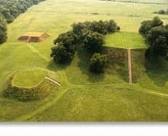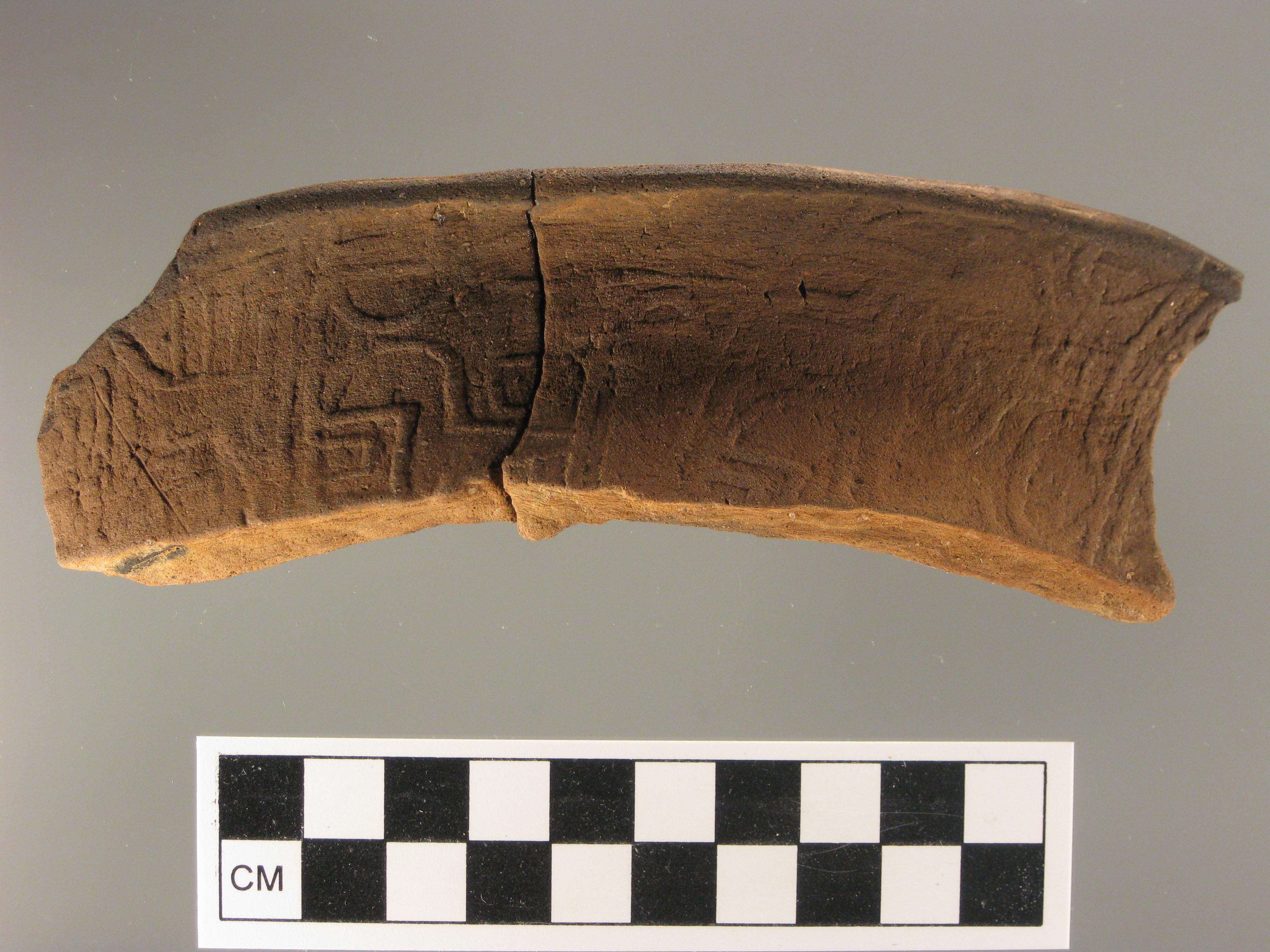
The village of Ochessee, located near Macon, Georgia, is the name site for the Lamar culture. The site includes one of the limited number of “step” mounds which has a circular ramp around it.
Late Mississippian in north Georgia is represented by the Lamar culture. Lamar ceramic types include Lamar Complicated Stamped, Incised, and Plain. Thickened rim jars are manufactured at this time. There is increased regional ceramic variation in the Late Mississippian. Lamar incised is a late development of the culture and is represented by increasingly complex incised decorations. Early Lamar wares have fine grit temper but the grit becomes coarser through time.
Of the many Lamar pottery types, the Lamar Bold incised and the Lamar Complicated stamped are the most recognizable and plentiful types in Georgia.
Subsistence included maize, bean, and squash agriculture; the use of numerous species of wild plants; the hunting of deer and other small game; and the utilization of several aquatic animal species. Domestic structures were square with individually set wall posts, wall trench entrances, and depressed floors. The walls were covered with mud plaster. Open sided sheds were also present but difficult to define. Groupings of structures around small open areas may represent some type of family arrangement. Platform mounds are still constructed during the Lamar culture and 21 mound sites have been identified. The settlement pattern consists of both mound and nonmound villages, individual farmsteads, and a few rockshelters. Specialized mortuary sites have also been located. In the Etowah River Valley, early Lamar is represented by the Stamp Creek phase while the Brewster phase marks late Lamar. These phases are defined on the basis of ceramic traits.

The Etowah Mound complex is located in Cartersville, Georgia.
The Etowah site (9BR1) is the best known archaeological site in north Georgia. It is a Mississippian mound group with a surrounding ditch (Moorehead 1932:1). Mound building began during the Etowah III phase, reached its peak during the Middle Mississippian, and declined during the Late Mississippian. Archaeological investigations have been conducted on the since the 1930s and much has been learned about the chronology and settlement plan (Hally and Rudolph 1986).

Long Swamp Complicated Stamped and Wilbanks Complicated Stamped pottery are found only along the Etowah River valley in northwestern Georgia. The concentric circles of Wilbanks pottery can be mistaken for Savannah Complicated pottery that was widely distributed across Georgia during the Middle Mississippian period.
In the proposed Lake Allatoona Basin along the Etowah River, some large Mississippian sites were identified and excavated including the Woodstock site (9CK2), the Woodstock Fort site (9CK104-F), the Wilbanks site (9CK5), and the Long Swamp site (9CK1) (Caldwell 1957).
Wauchope (1966:60-91) reported a large number of Mississippian sites from north Georgia. In his study the Savannah culture was considered to be Late Mississippian while the Lamar culture was placed in the protohistoric.
In the shoreline survey of Lake Allatoona, several Mississippian sites were identified. The Early Mississippian Woodstock culture was represented by 22 sites. Seventeen Etowah culture sites were either located or revisited. The Middle Mississippian Savannah culture was represented by 25 sites. Early Lamar Stamp Creek components were found on nine sites and 14 sites with late Lamar Brewster phase components were identified.
To find out more about the Late Mississippian period and the Southeastern Ceremonial Complex, please visit the “Artifact Identification” section of our site under “Ceremonial Objects.”